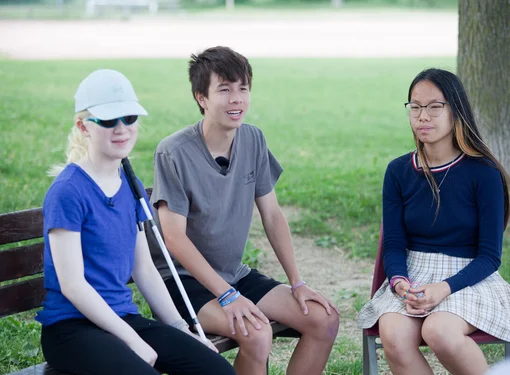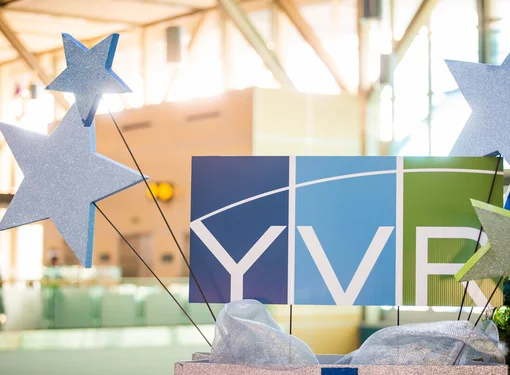The Scoop on Guide Dog Etiquette
A guide dog is a partner in independence for blind or partially sighted people and can open up the world in a profoundly different way. In order to do that, there needs to be a better understanding of guide dog team etiquette.
It's important for the public to understand that guide dogs are working dogs and not following the proper etiquette could endanger both the safety of the handler and their guide dog.

Here are a few guidelines for guide dog etiquette:
- Harness on means hands off. A guide dog in harness means “I’m working.” Petting can take the guide dog’s focus off its partner and the potential for injury increases. If the dog is not working the guide dog handler may decide to remove the harness and let you pet the guide dog. It’s a good idea to always ask first.
- Don't feed them. Offering food to the dog can result in disruptive behaviours like begging for food and scavenging off the ground.
- Contain your excitement. Don't encourage excitable play with a guide dog. Staying calm is part of their job.
- Say "hello" another time. If you're walking your pet and you approach a guide dog team, keep your dog away to avoid a distraction for the guide dog and possible harm to the guide dog user. Of course, it’s a good idea to keep your dog on a leash.
- There is time for play! Guide dogs don’t wear their harness at home, where they are not working and get to be a "pet" dog. This is their time to play, run around and relax.
Guide dog legislation across Canada
In all of Canada's 10 provinces and three territories, legislation prohibits discriminating against a person with a disability who is working with a guide dog. Discrimination includes denial of access to any premises to which the public would normally have access.
Despite it being illegal to deny access or refuse service, it happens every day – especially in taxis, restaurants, hotels and stores. CNIB is asking businesses to open their doors to Canadians with guide dogs. Not only is it the right thing to do, it's the law.

Know your rights and legal responsibilities regarding guide dog access
Business owners have a responsibility to ensure the rights of guide dog teams are respected – meaning business owners cannot deny access or refuse service to guide dog teams.
If a guide dog’s behaviour is inappropriate, the business or organization has the right to ask the guide dog handler to leave. Inappropriate behaviour generally means the guide dog is not under the handler’s control (such as barking after being told not to, or jumping up).
It is unacceptable to ask for proof that a dog is a guide dog, unless it is behaving inappropriately. It is best practice to assume the guide dog is a qualified guide dog, unless given reason to think otherwise. When competing rights are an issue – such as allergies – a compromise needs to be made to maintain the rights of everyone involved.
Guide dogs belong everywhere. It’s the law. For more information on how to support guide dogs in your community, visit guidedogchampions.ca.







